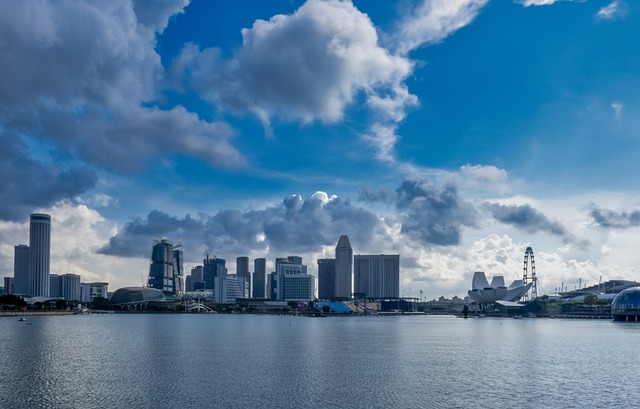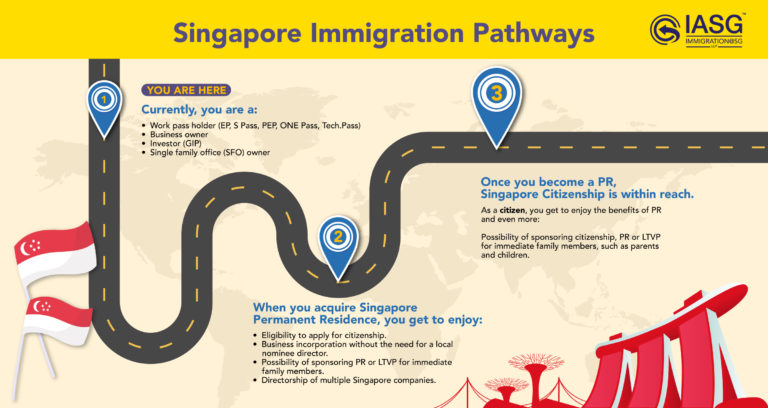Singapore just celebrated its 60th birthday but this tiny city state has been topping global rankings for years in literally every category. It is a well known fact that Singapore went from being a third world country in Southeast Asia to one of the richest countries in the world, all with no natural resources. Many are in awe of Singapore’s success and its rise to power have been studied over the years. In this article, we explain how Singapore got rich so quickly and if this prosperity will last.
From Kampung to Metropolis
When Singapore became independent in 1965, it faced mass unemployment, no natural resources, and limited land. In under six decades it became one of the world’s wealthiest and most resilient city-states. The secret was not luck but a set of repeatable choices: pragmatic long-term governance, investment in people, and a managed openness to the world.
Singapore’s advanced urban planning seeks long into the future to build infrastructure and neighbourhoods that would encourage cohesive living, working, studying, and playing spaces for residents of all ages. Today, both residents and tourists enjoy Singapore’s modern architecture that works efficiently and functionally well.
Leadership with Long-Term Vision
Singapore’s founding leadership built institutions that include a professional civil service, strict anti-corruption norms, and a results-oriented bureaucracy that prioritise national survival and competitiveness. In its early days, some of its neighbouring countries were doing better but internal chaos such as rampant corruption and political instability eventually aced Singapore economically. This is a great feat, considering its neighbours are rich in natural resources. The architecture of modern Singapore is therefore as much institutional as it is physical.
Turning Geography into Strategy
Singapore converted its strategic maritime location into a global logistics, finance and services hub through targeted infrastructure investment and a consistent business environment. The Economic Development Board (EDB) and related agencies actively attracted multinational firms and high-value manufacturing and services, creating diverse engines of growth, including jobs for both locals and foreigners.
Immigration: Essential to Nation Building
Immigration fuels labour supply, entrepreneurship and skill transfer. Singapore’s tiered approach from essential Work Permits for labourers and domestic helpers to Employment Passes for high-skill professionals is designed to match national needs while preserving social cohesion.
More than just earning a living, Singapore requires foreigners, especially those who intend to live in the country long-term through continued validity of Work Passes or via Permanent Residency and Citizenship, immerse into local lifestyles and cultures such as educational institutions, community clubs, and neighbourhood life, thus reinforcing a shared identity that keeps social trust high and markets fluid.
With many different races and religions of immigrants, there is bound to be miscommunications and misunderstandings. Learning from its past, Singapore makes sure that differences in race and religion will not happen again, thus, both locals and foreigners are required to learn to live in harmony with each other. And this is one of the reasons for Singapore’s stable economy – the lack of internal conflicts.
How Singapore Anticipates and Solves Problems Other Nations Struggle With
Below we examine concrete ways Singapore prepares for and mitigates major long-term risks such as ageing populations, economic shocks, and geopolitical uncertainty and why these responses are distinctive.
1) Demographics and Ageing – active planning and staggered goals
Many advanced economies such as Japan and South Korea, and increasingly China, are strained by rapidly ageing populations and low birth rates. Singapore has the same demographic headwinds, but it has built a multi-pronged response – policies to support seniors’ incomes and community care, programmes to keep older workers economically active, incentives and support for families, and selective immigration to refresh the workforce. Government planning for ageing is visible in national action plans that coordinate healthcare, housing, eldercare training and community support to keep seniors socially connected and economically productive.
Singapore’s Central Provident Fund (CPF) architecture ties retirement, housing and healthcare savings together, reducing the fiscal shock of ageing that many welfare states face. The CPF, together with targeted supplements for lower-income seniors, helps shield household incomes and reduce immediate fiscal pressures.
Japan and South Korea have ageing populations coupled with rigid labour markets and slower immigration adaptation. China’s demographic shift is happening at enormous scale and speed, making policy responses harder to coordinate. Singapore’s advantage is scale – a small population makes pilot programs and policy calibration faster, a long history of centralised cross-agency planning, and a pragmatic mix of social insurance, community care and controlled immigration to rebalance the workforce.
2) Economic resilience and fiscal prudence – sovereign reserves and continuous re-tooling
Singapore has purposely built large public wealth pools and prudent fiscal buffers via entities that manage national savings and investments such as the GIC and Temasek Holdings. These reserves provide fiscal firepower, countercyclical capacity, and the ability to invest in disruptive technologies and global assets. State investment vehicles and sovereign funds also actively reposition capital into strategic technologies including AI infrastructure and data centre capacity, allowing the city-state to stay at the frontier of new industries. Recent activities by state investment firms underline this orientation.
Large, well-managed reserves give Singapore the option to sustain public services, backstop pensions, and invest counter-cyclically unlike countries carrying high public debt burdens that have limited manoeuvring room in downturns. This structural financial strength makes Singapore less likely to face the sovereign financing stress that threatens some Western economies.
3) Continuous skills upgrading and digital transformation
Facing rapid technological change, Singapore has institutionalised lifelong learning and national digital strategies, from SkillsFuture to the Smart Nation programme, to keep the workforce adaptable and to automate where possible without leaving people behind. These programmes explicitly aim to cushion job displacement by reskilling and to direct talent into growth sectors.
Many economies underinvest in broad, systematised reskilling. Singapore’s approach is catered to every level of society including government, employers, and workers, making transitions smoother and labour markets more fluid.
4) Social cohesion, smallness, and proactive integration
Singapore treats social cohesion as economic infrastructure. Housing policies, community-level programmes and carefully calibrated immigration rules reduce the friction between newcomers and locals. By encouraging immigrants to participate in local schools, community centres and civic life, the state reduces polarisation that erodes investor confidence and raises political risk.
Fragmentation and populist backlash over immigration have destabilised many democracies. Singapore’s emphasis on civic integration and the social compact helps maintain a predictable environment for investment and cooperation.
5) Geopolitical agility: neutrality, diplomatic reach
Singapore has cultivated a policy of “friend to all, enemy of none”, maintaining ties across economic blocs while investing in strong defence and civil resilience. This pragmatic diplomacy, combined with economic openness, allows Singapore to avoid entanglement while still attracting capital, skills and technology.
Countries locked into polarised alliances or regional rivalries face spillovers that can hurt trade and investment. Singapore’s diplomatic balancing plus robust domestic preparedness reduces those spillovers.
30-Year Outlook: How Will Singapore Fare? (2025–2055)
Below is a concise, evidence-based projection of plausible trajectories for Singapore over the next three decades.
Continued high-income resilience with structural shifts
- Singapore remains an advanced, high-income economy, driven by finance, advanced manufacturing, biotech, AI and data centres. Public reserves and private sector dynamism keep fiscal space healthy.
- Demographic pressures will persist but be managed through a mix of family encouragement, active ageing policies, and selective immigration; the workforce will be smaller but more highly skilled and more automated.
- Social cohesion will be the key risk variable: good outcomes require continued community integration and employment opportunities that reduce inequality. If cohesion holds, investment and productivity remain strong.
Upside scenario: Singapore accelerates as an AI and green-tech hub, leveraging sovereign capital to anchor global data and energy projects, creating outsized high-value job growth and sustained current-account surpluses. Strategic diplomacy opens new markets and supply-chain roles.
Downside scenario: Global financial turbulence, major technological disruption, or a breakdown in social cohesion , for example if integration policies fail and socioeconomic divides deepen, could slow growth. Missteps in sovereign asset risk management or loss of credibility around transparency could also dent investor trust. Recent public debate over fund transparency underscores that stewardship matters as much as size.
Net assessment: Singapore has robust buffers and a track record of policy adaptation; barring catastrophic global war or systemic policy failure, the city-state is well placed to preserve high living standards and economic relevance through 2055,;albeit with a different economic structure – more automation, more knowledge work, and more strategic public investments.
Singapore’s Prosperity & Longevity
Singapore is not immune to global shocks, but its combination of fiscal buffers, civic design, workforce policies, strategic investment, and diplomatic agility makes it unusually prepared. The island’s distinct advantage is institutionalised adaptability: a cycle of planning, piloting and scaling that keeps the country ahead of many structural problems that snare larger, slower states.
Over the next 30 years, Singapore’s prosperity will depend less on geography and more on sustaining that adaptive mindset; continuing to integrate newcomers, upgrade skills, manage public wealth prudently, and preserve the social compact that turns policy into performance.
Singapore’s real asset is not just money or ports – it is the ability to see around the corner and plan ahead to act together. If it keeps doing that, it will remain among the world’s most resilient high-income societies.







